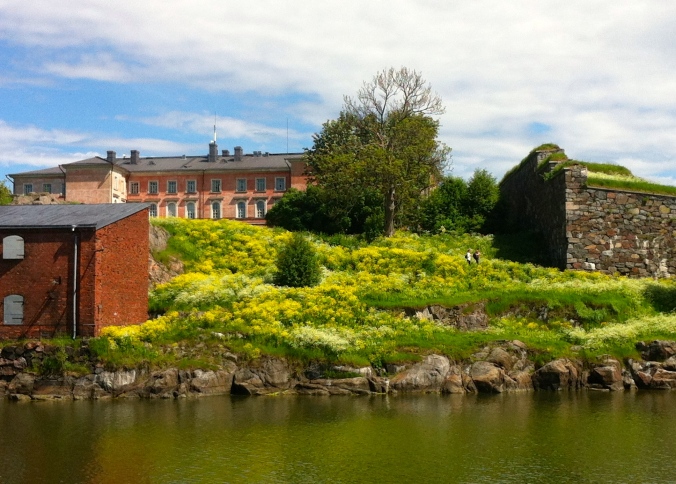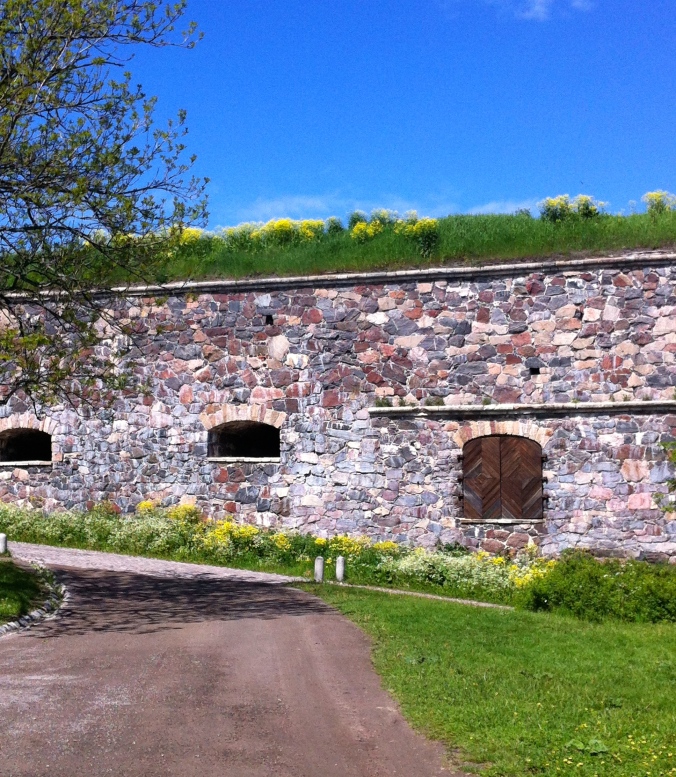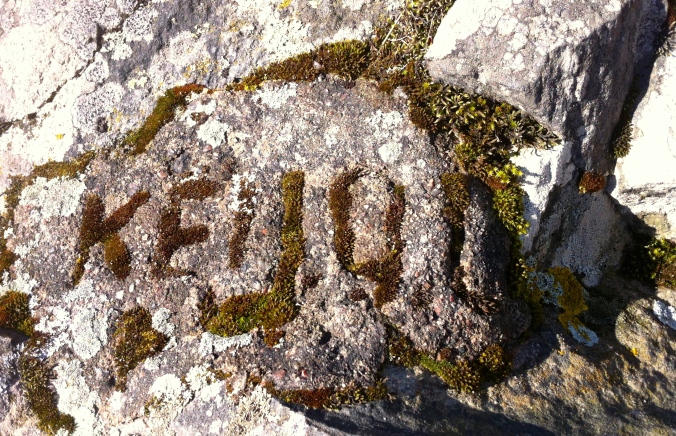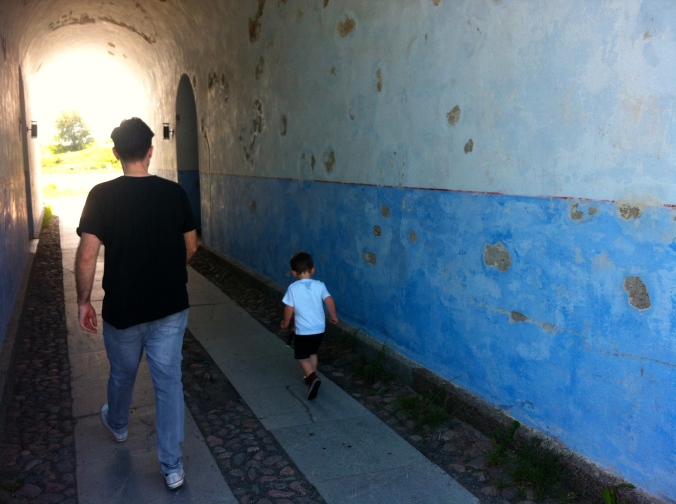I’ve mentioned before the wild abandon with which Finns let nature explode in the warmer months. The changes in our natural surroundings are incredible as trees and plants accustomed to the harsh climate come to life with just the smallest amount of encouragement. Hedges and edges are left untrimmed and greenery grows out of cracks in walls and pavements. Nowhere was this more evident than on our recent trip to the island fortress of Suomenlinna.
Suomenlinna (Suomen: Finnish, linna: castle) is not actually a castle but a sea fortress built on a series of islands 15 minutes by ferry from Helsinki’s Market Square. It is quite unique as it has played a part as a defence base for three different states: Sweden, Russia and Finland.
Construction began in 1748 when Finland was part of the Kingdom of Sweden. King Frederick I named the fortress Sveaborg and visited four years later to see how the construction was going. King’s Gate was built on the site where his ship anchored and is now considered the most emblematic site of interest on Suomenlinna.
In 1788 the fortress served as a naval base during the Russo-Swedish War. Twenty years later the fortress surrendered during the Finnish War and became a Russian naval base for the next 110 years.
A Russian Orthodox church was built on the island in 1854. During the early days of Finnish independence the church was converted to an Evangelical-Lutheran church and all signs of Russian decoration, including the onion domes, were removed. A lighthouse still operates within the church steeple.
During the Crimean War of 1855 the fortress was damaged during bombing by the Anglo-French fleet. At the time of the Finnish Civi War in 1918, a prison camp was set up on the islands and the fortress was renamed Suomenlinna.
The fortress went on to play an important role as a base during the start of the Second World War. As well as cannons and guns still in place there is a submarine you can pay a small entry fee to explore. In 1991 Suomenlinna was added to UNESCO’s list of unique monuments of military architecture and became a protected World Heritage Site.
The islands are also home to tunnels you can explore if you bring your own torch. It reminded me of Kirrin Island in the Enid Blyton books I read when I was younger and I wonder if there’s a Smuggler’s Cove.
More than 800 residents now call Suomenlinna home and there are art galleries, museums, shops, cafes and wonderful lookouts. We briefly considered living here when an apartment became available but we wondered about accessibility during the winter months.
The beauty of the wild flowers was my favourite thing about Suomenlinna as we stopped for ice cream and later for a beer in the late afternoon sun. But I know it will be worth another visit during winter when the landscape will be transformed by ice and snow into a surreal frozen scene. And lying underneath will be the the seeds of the wild flowers and grasses, resting until the warmer months.
With thanks to the Suomenlinna Tourist Guide.










Great post and photos Melanie, this place is amazing 🙂
LikeLike
Thanks Joe! I’m sure you’d love it there. I don’t know what the climate is like where you are but I think you’d enjoy documenting the seasons here ; )
LikeLike
I love the pic of Jonny and Miko in the wildflowers! Looks amazing! xx
LikeLike
We’ll recreate it when you’re here Bec! Xx
LikeLike
Pingback: Meet me at Old Market Hall | Hey Helsinki
Pingback: An Insider’s Guide to Helsinki | Hey Helsinki
Pingback: 101 reasons to visit Helsinki | Hey Helsinki
Pingback: Up, up & around! | Hey Helsinki
Suomenlinna is nice place to visit.I have recorded a video from suomenlinna in winter. It’s really beautiful with the snow and everything.Ii really recommend visiting Suomenlinna Fort if you are visiting Helsinki. I used my go pro camera to record footage so sorry for not perfect quality.
https://www.youtube.com/watch?v=U2ZZOWFqfsw&feature=youtu.be – Suomenlinna Fort
LikeLike